ECOLOGICAL HOUSING
Spring 2018 | Professor: Dana Cupkova, Nina Chase, Matt Huber
Project Partner: Scarlet Tong
How can people, flora, and fauna all live in harmony within an urban context?
This project redesigns urban housing through the integration of ecological systems based in the Strip District of Pittsburgh PA, along the river’s edge. The project explores ecologically driven form-finding, with focuses on water and regeneration as the site help to strengthen the river ecosystem while providing ecosystem services and water delight to the inhabitants. The site also factors in the flood potentials of the site given contexts of climate change, and imagines how this housing development could aim to develop resiliency and flexibility to flooding over time.
This project was exhibited at the Frame Gallery in Pittsburgh for the Sustainability Week Exhibition.

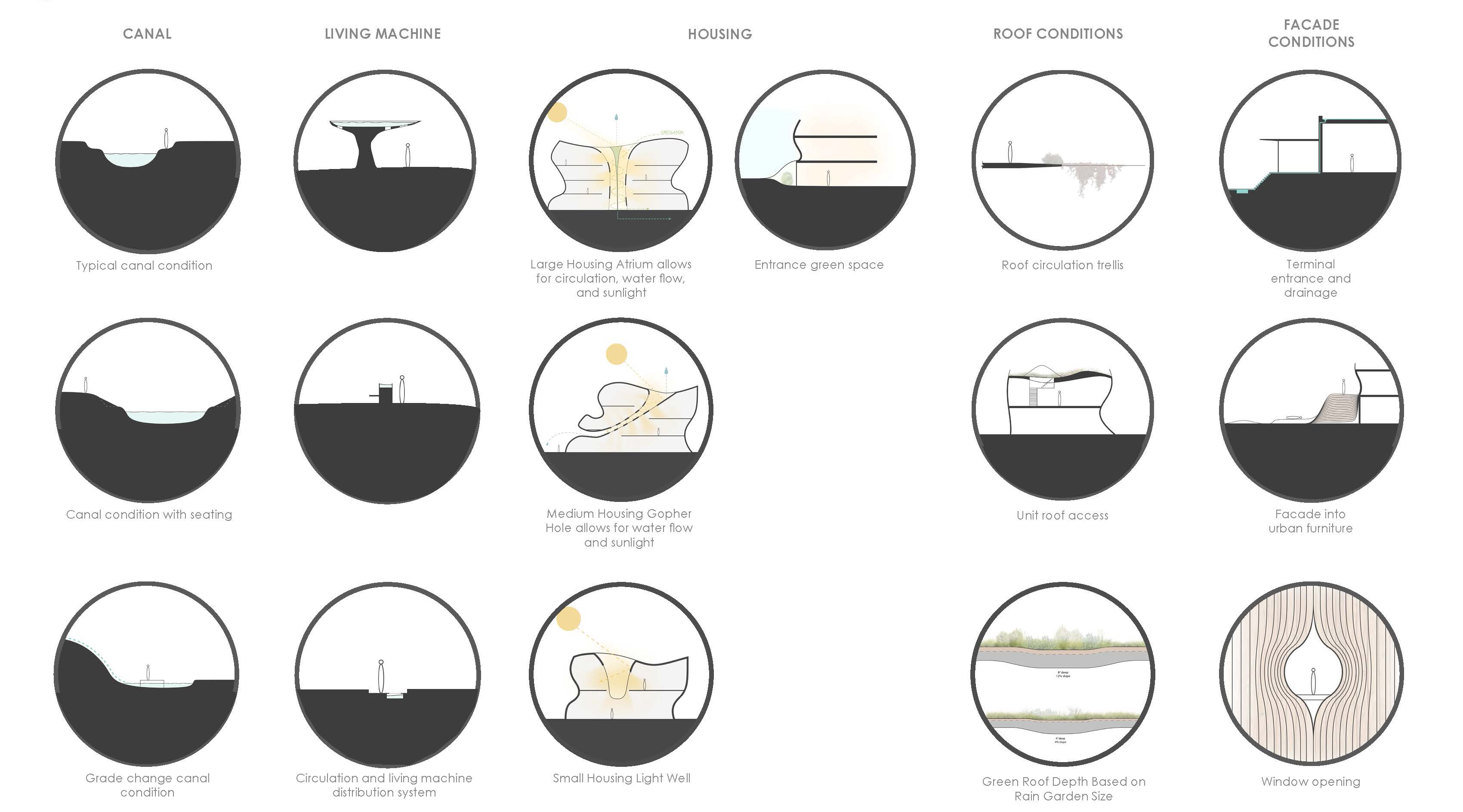
Design Details
A series of site conditions and details were developed to support the overall ecological intent and integration on a human scale. This is evident throughout the whole site, from the canal system to the integrated living machine to the roof conditions.
Though the conditions are not considered to construct details, each design was considered to schematic design level with some systems thinking involved.
A series of site conditions and details were developed to support the overall ecological intent and integration on a human scale. This is evident throughout the whole site, from the canal system to the integrated living machine to the roof conditions.
Though the conditions are not considered to construct details, each design was considered to schematic design level with some systems thinking involved.


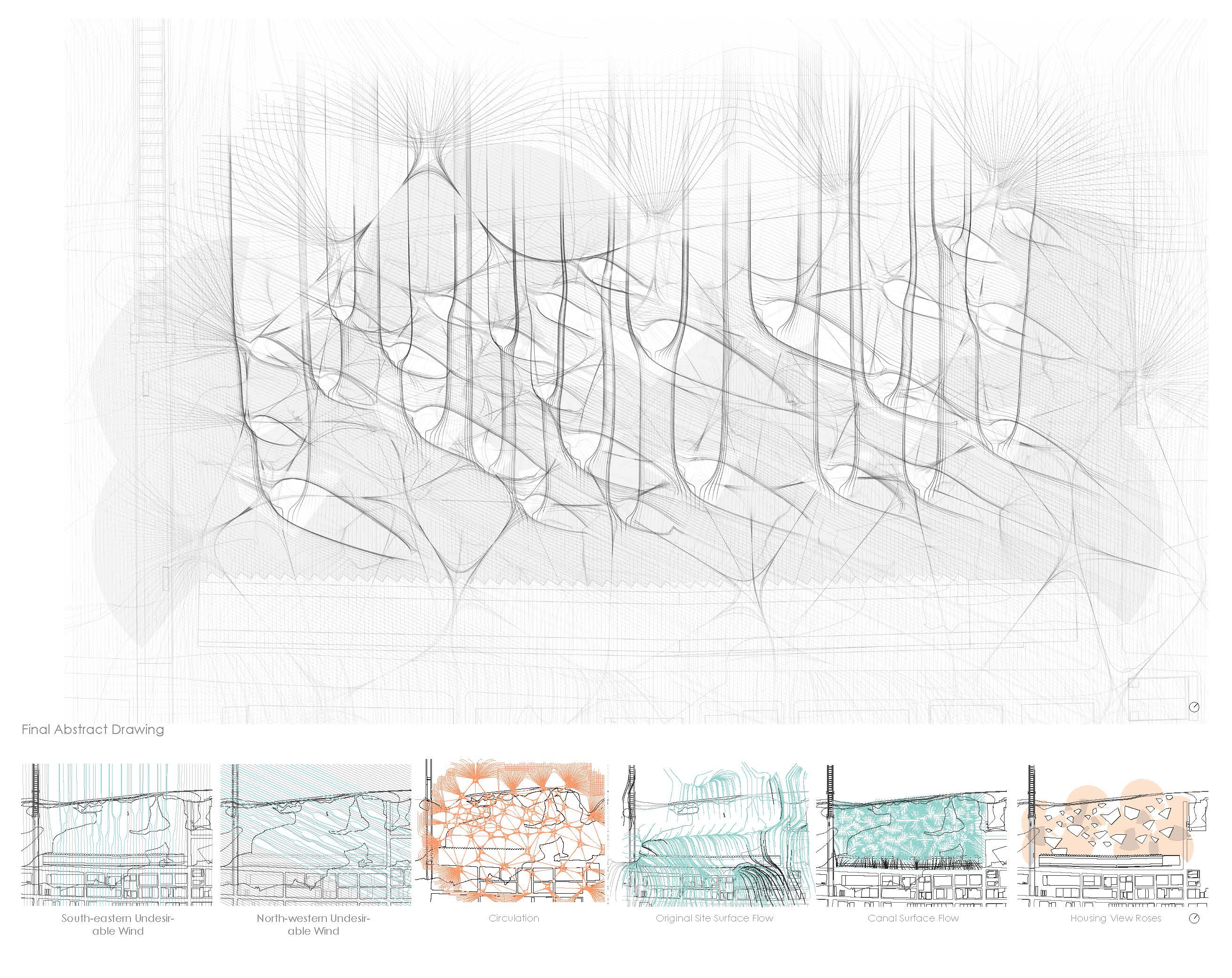
Parametric Form Finding
For this site, the climatic and ecological impacts of the site played a large role on how the form of the design was developed. A series of computational simulations were conducted based on various site, climatic, and ecological factors that then overlay and react with one another to develop a spatial form that is developed.
The final product provides foundational form making and understanding of the possible synergies or issues that may arise within the site context, which could then be iterated and developed further through model making and iterative design processes.
For this site, the climatic and ecological impacts of the site played a large role on how the form of the design was developed. A series of computational simulations were conducted based on various site, climatic, and ecological factors that then overlay and react with one another to develop a spatial form that is developed.
The final product provides foundational form making and understanding of the possible synergies or issues that may arise within the site context, which could then be iterated and developed further through model making and iterative design processes.
Flexibility and Change over Time
How the site changes and adapts over time with seasons and climate changes was a crucial aspect of the design process.
From growing ecology to flooding over time to how the different site community spaces transform itself based on the seasons, these considerations all contributed to the richness and vibrancy of the design, as well as further solidified the values of social and ecological integration within the design work.
Shown below are more information on the many layers and ecological considerations that contribute to the ecological and social integration through systems thinking, landscape design, and parametric design.
How the site changes and adapts over time with seasons and climate changes was a crucial aspect of the design process.
From growing ecology to flooding over time to how the different site community spaces transform itself based on the seasons, these considerations all contributed to the richness and vibrancy of the design, as well as further solidified the values of social and ecological integration within the design work.
Shown below are more information on the many layers and ecological considerations that contribute to the ecological and social integration through systems thinking, landscape design, and parametric design.
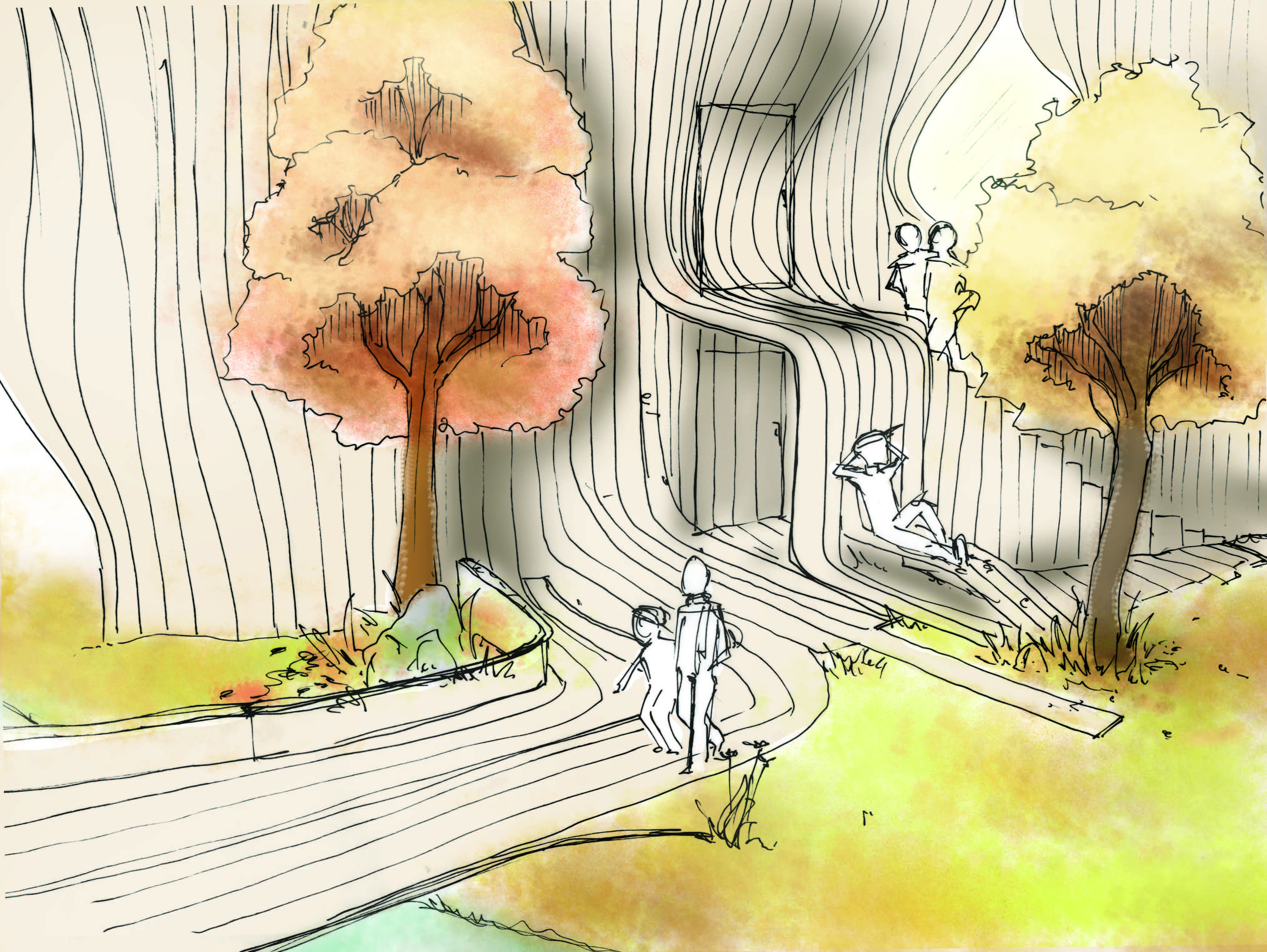
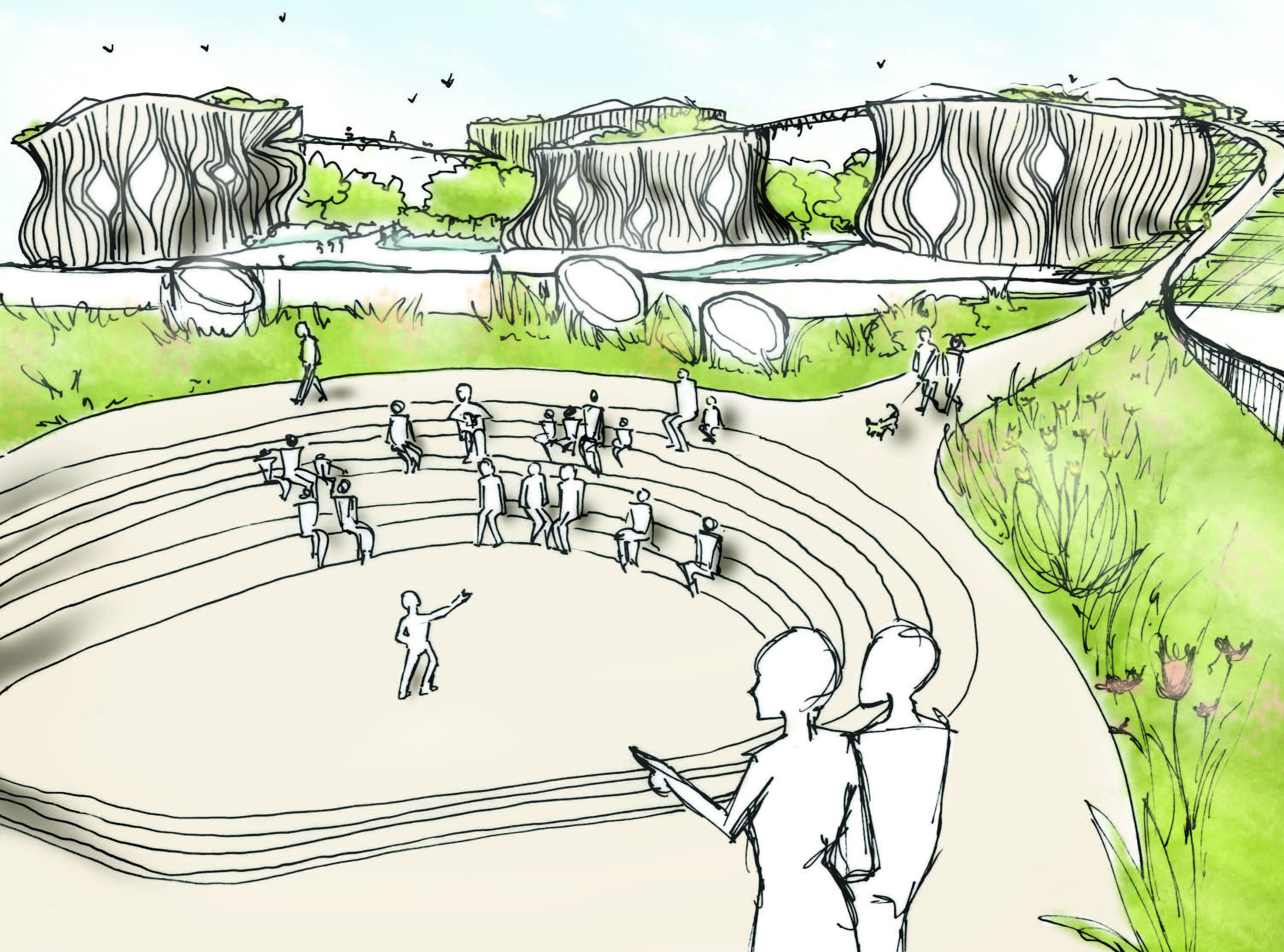
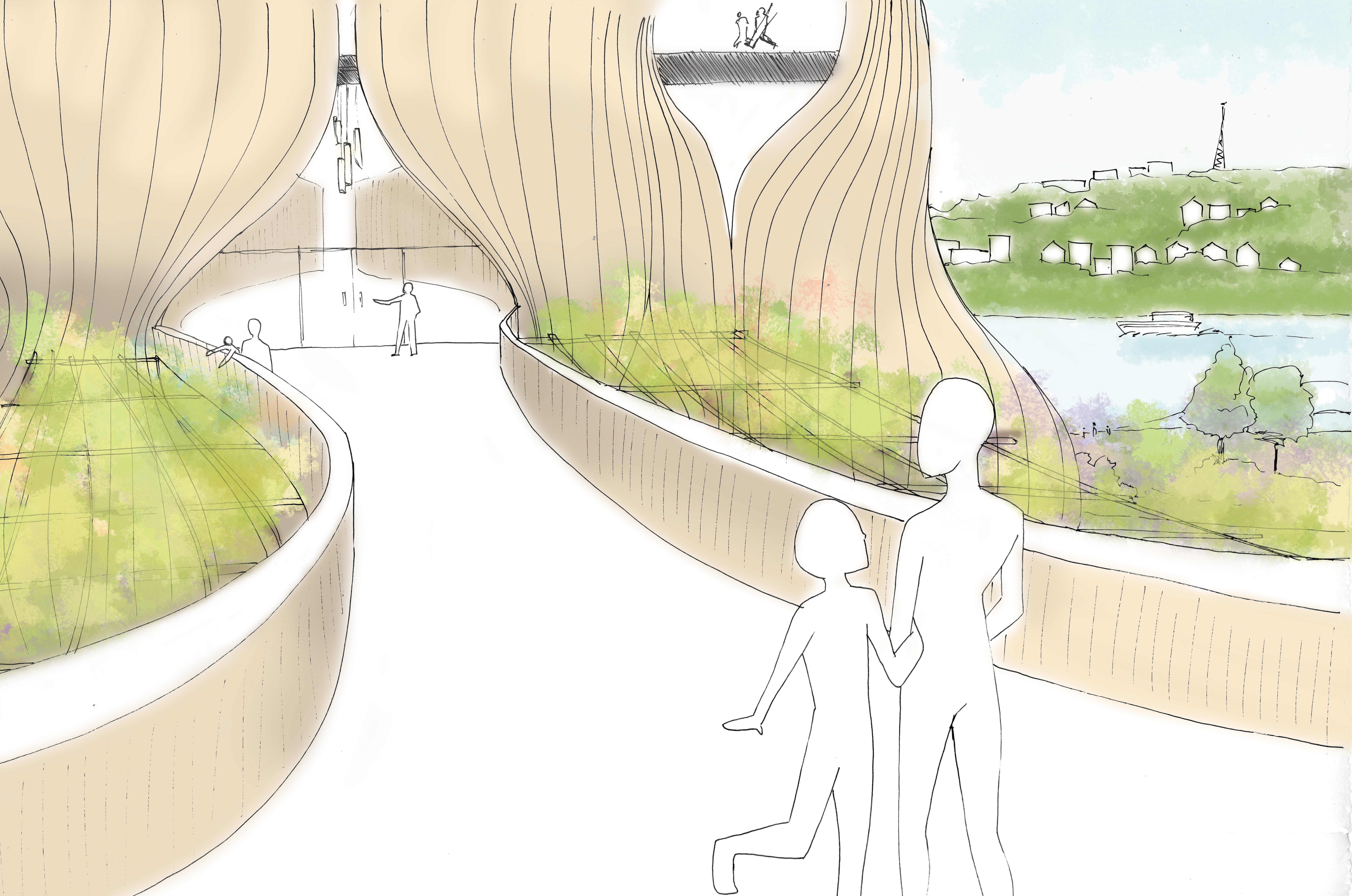

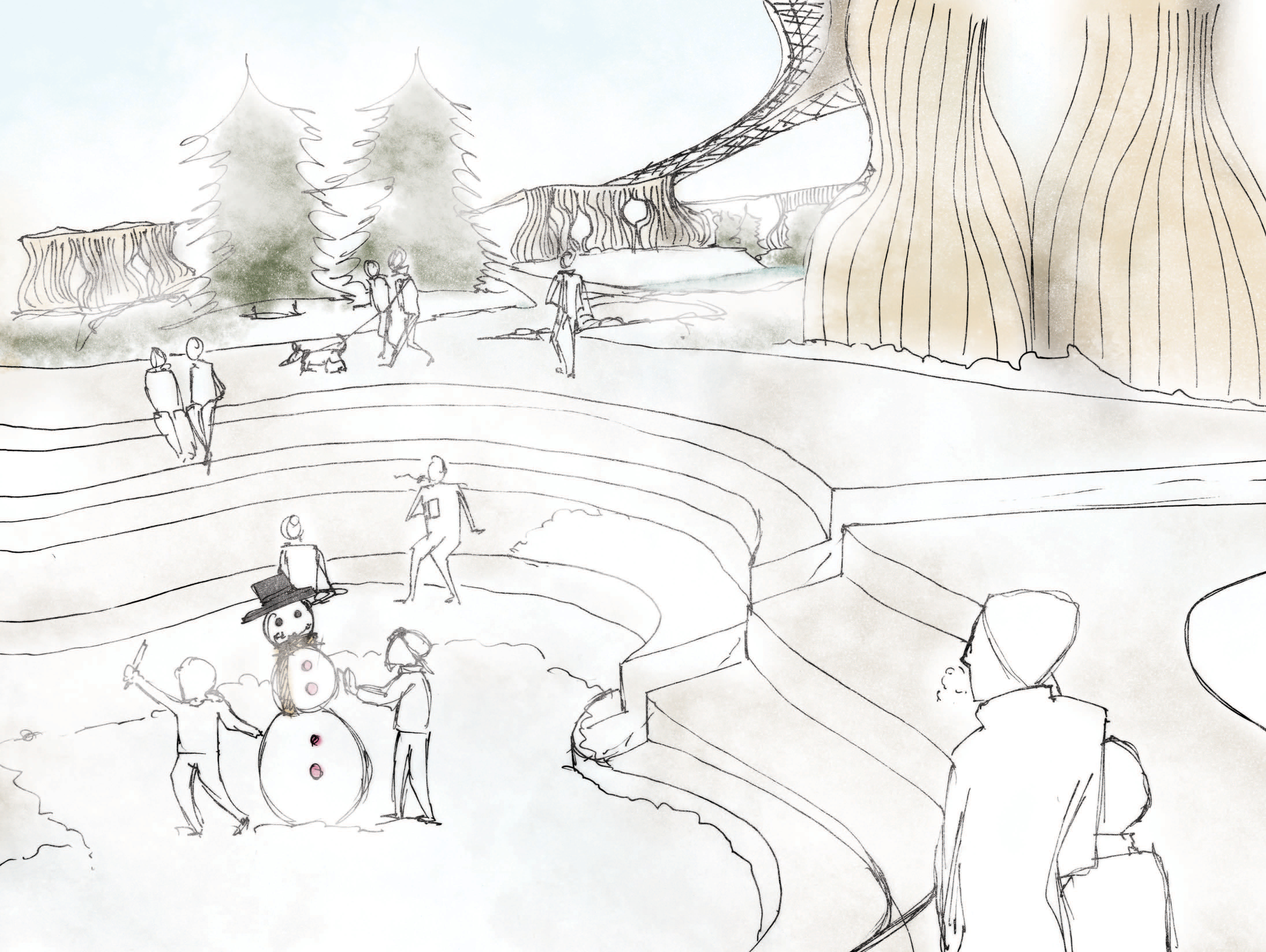
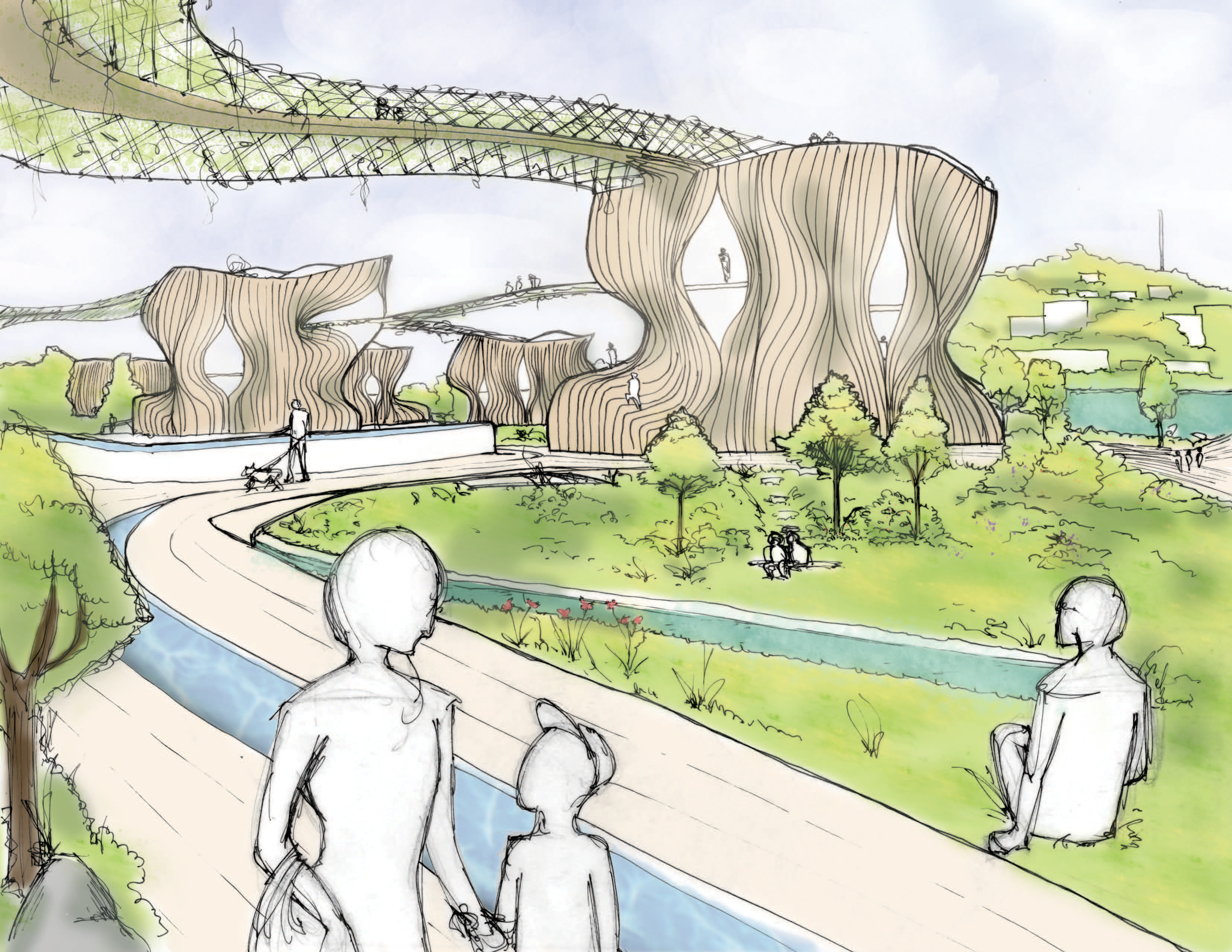

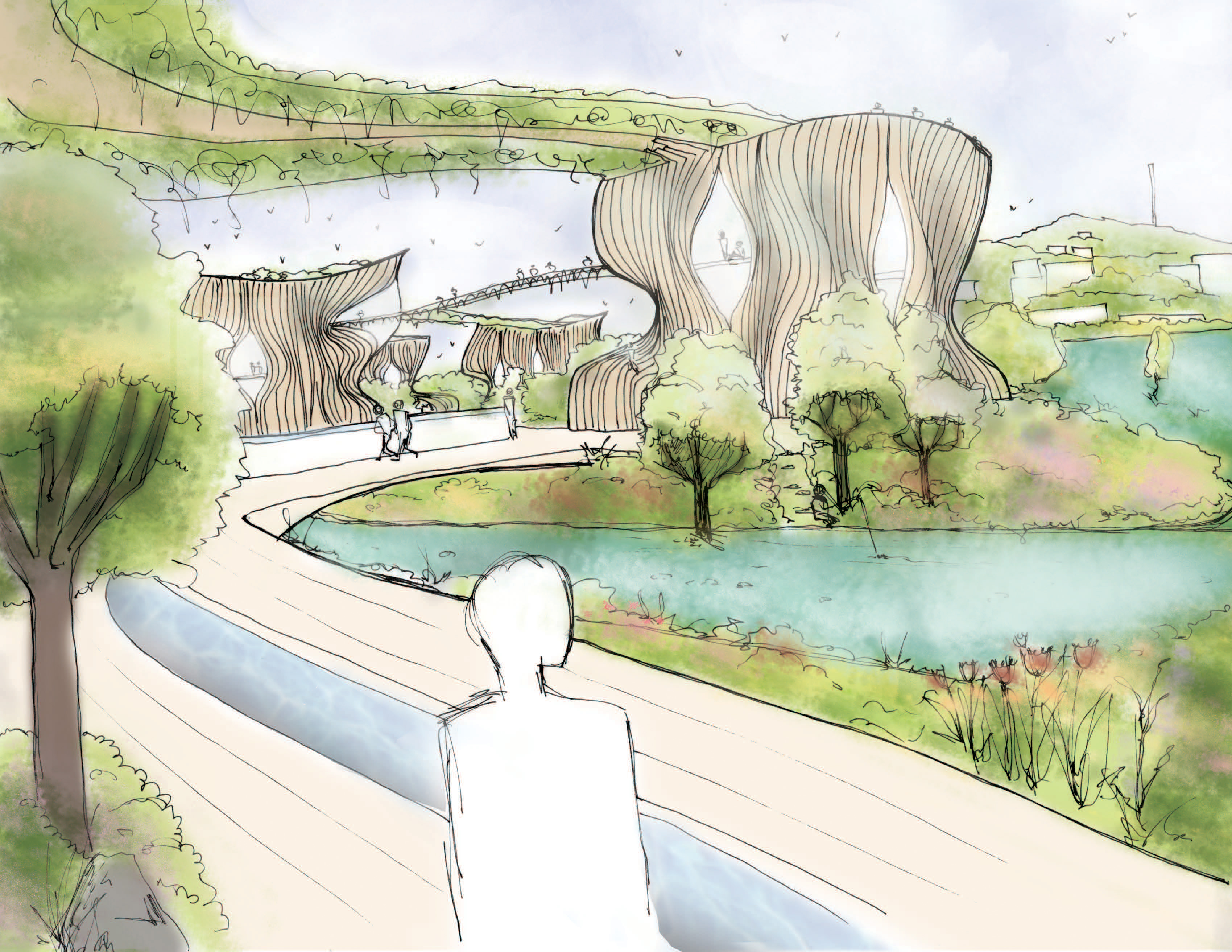


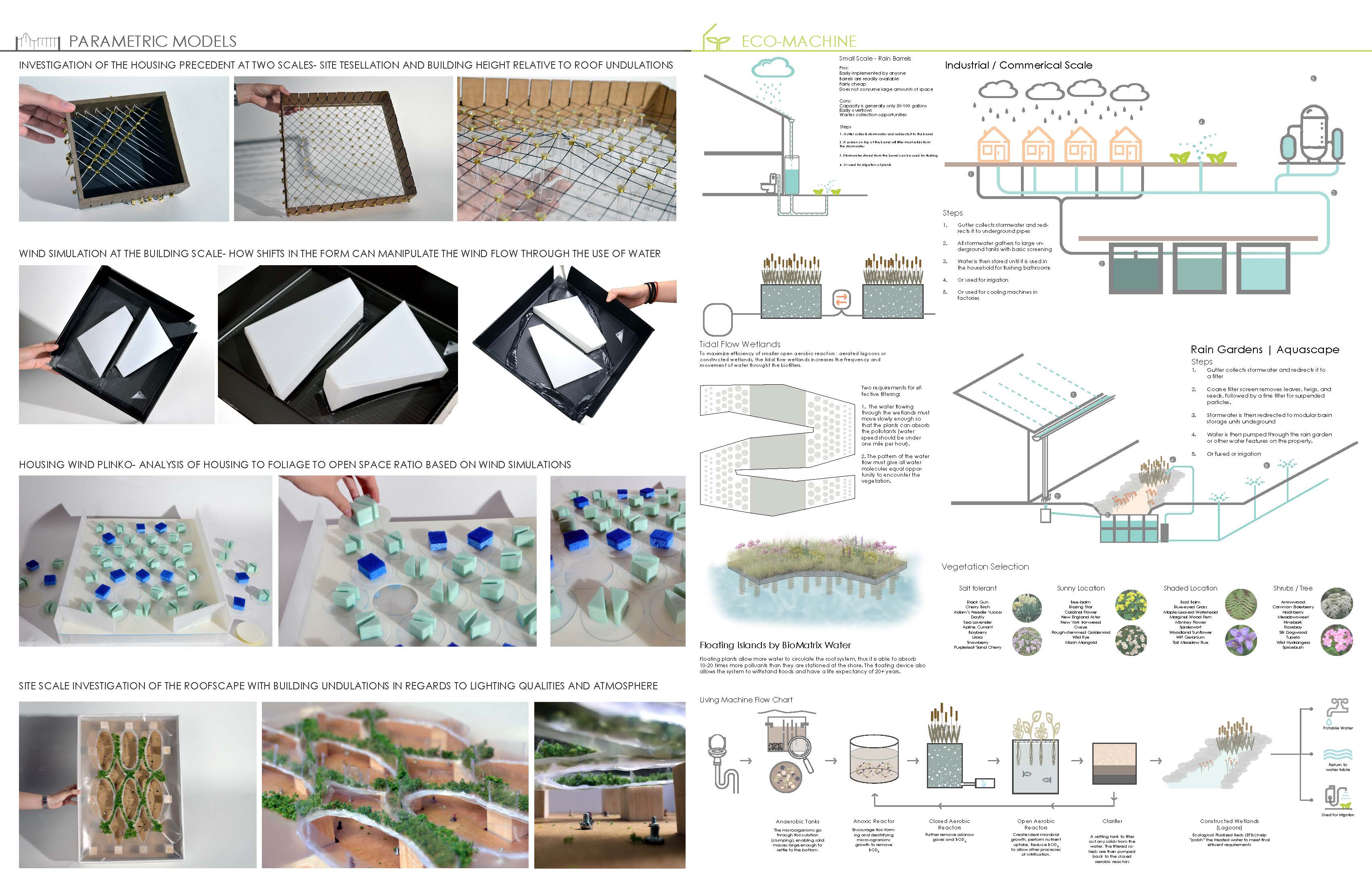
Design Process + Research
Research on housing and eco-machines were conducted through the use of case studies analysis to better understand what the potentials and existing standards are, and to explore potential connections between eco-machines and housing typologies.
Additionally, intensive site analysis was conducted to better understand the surrounding neighborhoods, demographic, transit system, but also the ecological and water infrastructures that exist already or historically. It was also important to conduct climatic studies based on wind and sun, and to gain further understanding of the potential site concerns and threats, such as flooding or sewage.
Lastly a series of “parametric” models allowed us to physically explore and test design hypotheses through the act of manipulation and play to better understand site and design potentials. This ranged from models that could be manipulated and stretched to models that could have water poured to simulate wind (as shown below).
Research on housing and eco-machines were conducted through the use of case studies analysis to better understand what the potentials and existing standards are, and to explore potential connections between eco-machines and housing typologies.
Additionally, intensive site analysis was conducted to better understand the surrounding neighborhoods, demographic, transit system, but also the ecological and water infrastructures that exist already or historically. It was also important to conduct climatic studies based on wind and sun, and to gain further understanding of the potential site concerns and threats, such as flooding or sewage.
Lastly a series of “parametric” models allowed us to physically explore and test design hypotheses through the act of manipulation and play to better understand site and design potentials. This ranged from models that could be manipulated and stretched to models that could have water poured to simulate wind (as shown below).




